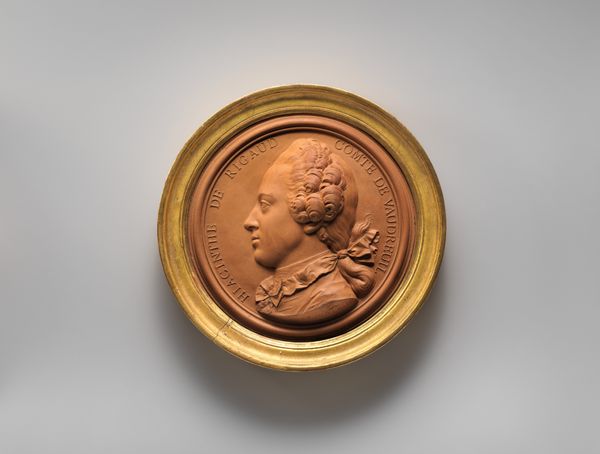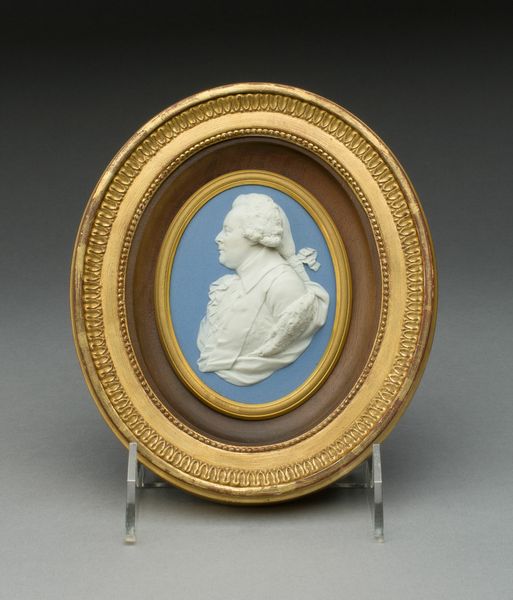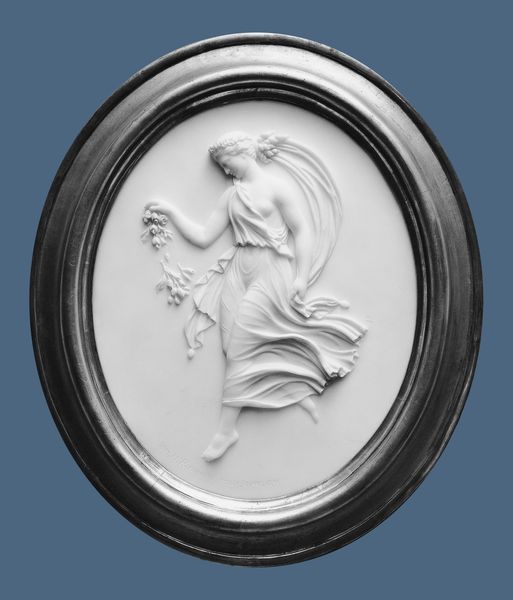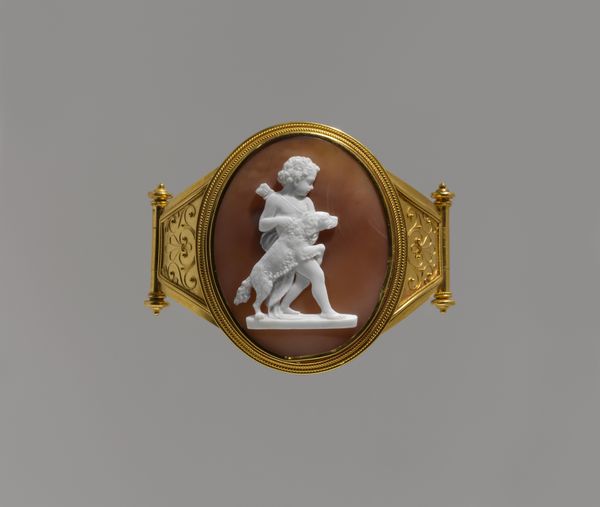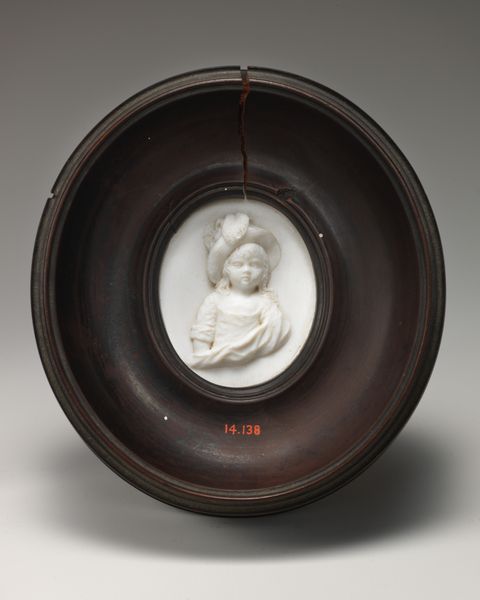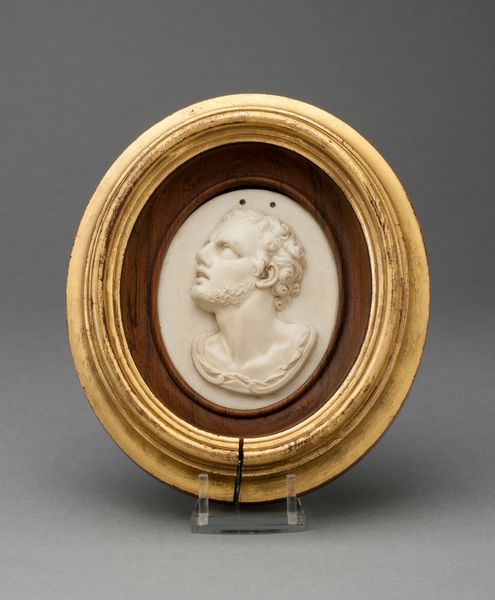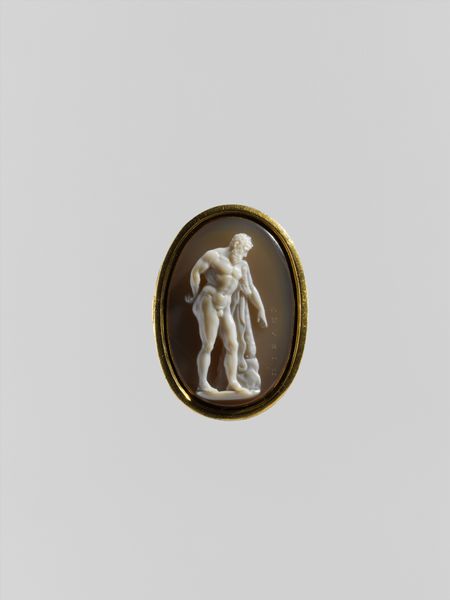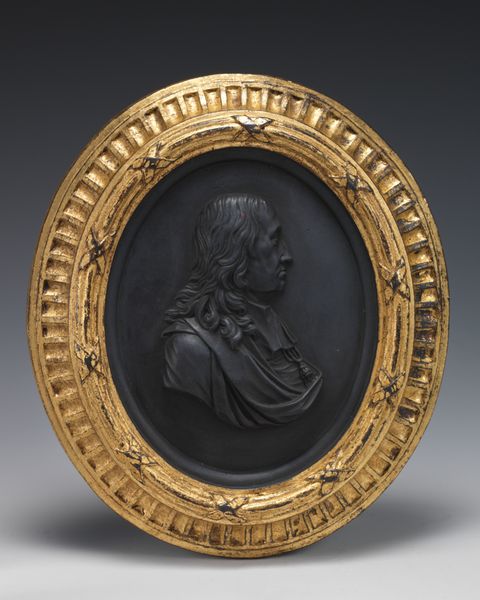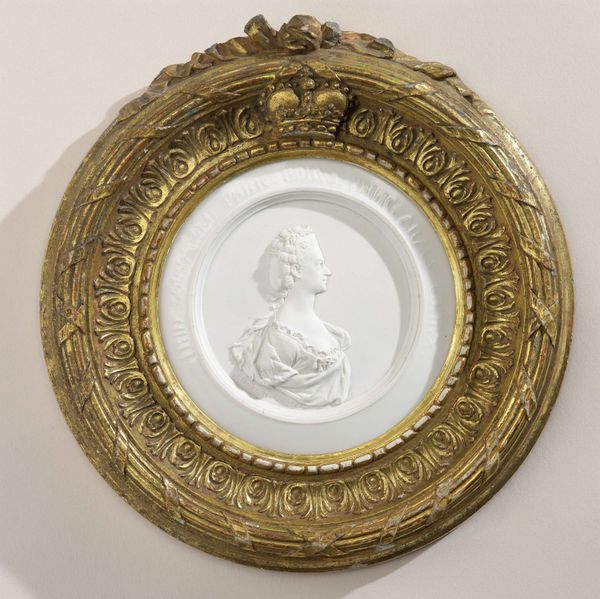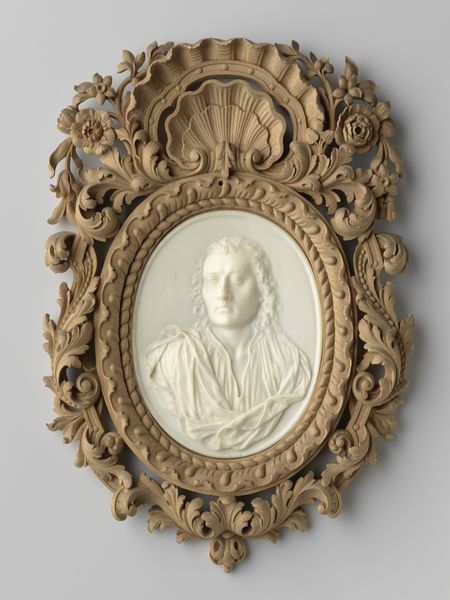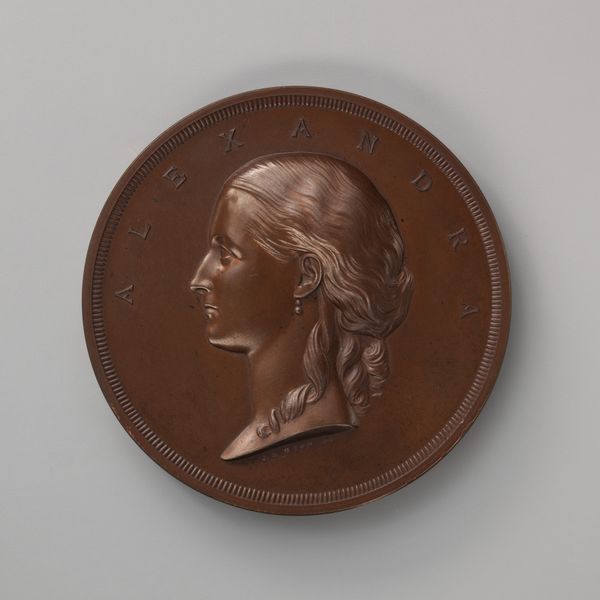
sculpture, marble
portrait
neoclacissism
sculpture
classical-realism
sculpture
marble
statue
Dimensions: 16 1/2 x 16 1/4 in. (41.9 x 41.3 cm)
Copyright: Public Domain
Curator: This is Erastus Dow Palmer’s marble relief, “Sappho,” carved between 1855 and 1861. You can find it here at the Metropolitan Museum of Art. Editor: What strikes me immediately is its quiet intensity. The downward gaze, the soft drape of the veil—it's incredibly evocative. There's a melancholic air about it, don't you think? Curator: Absolutely. It’s crafted during a period heavily influenced by Neoclassicism; let’s not forget how the rediscovery of classical forms and narratives profoundly shaped artistic production during the 19th century. Looking at this piece, I wonder about the labor conditions, the transatlantic marble trade, and the role patronage played in commissioning this sculpture, because that's all embedded here, right? Editor: Certainly, but the formal execution also reveals much. Consider how the smooth marble enhances the soft contours of her face. Palmer used the roundel format and focused the composition inward; that amplifies her inward contemplation. I wonder about his intention when shaping those details. Curator: And perhaps the labor associated with producing it? It takes not only a skilled hand, but also specific economic conditions for this kind of luxury object to exist in the first place. Marble wasn’t always easy to come by, and that factors into how this imagery circulates through society and signals particular ideas of beauty or status. Editor: Yes, I suppose considering the accessibility to such art reveals certain societal conditions. Even now, it's striking how this almost photorealistic depiction has an arresting timelessness despite its historical specificity. The simple framing pushes you directly to examine her face as if seeing her innermost thoughts laid bare. Curator: Thinking of distribution, who consumed Palmer's art and how? These sculptures often catered to a rising mercantile class seeking validation and refinement, so this sculpture ends up acting as material confirmation of social stratification. Editor: Your insights make me re-evaluate my initial impression. What seemed at first like a study in subdued elegance gains richer context when we bring social manufacturing into consideration. Curator: Exactly, the art itself is never isolated. Bringing our focused material attention to such objects makes for far more enriched encounter. Editor: I agree. This approach balances what we observe visually with what we understand intellectually. It highlights new areas and new perspectives on a work that might be easily misconstrued as “merely” pretty.
Comments
No comments
Be the first to comment and join the conversation on the ultimate creative platform.
